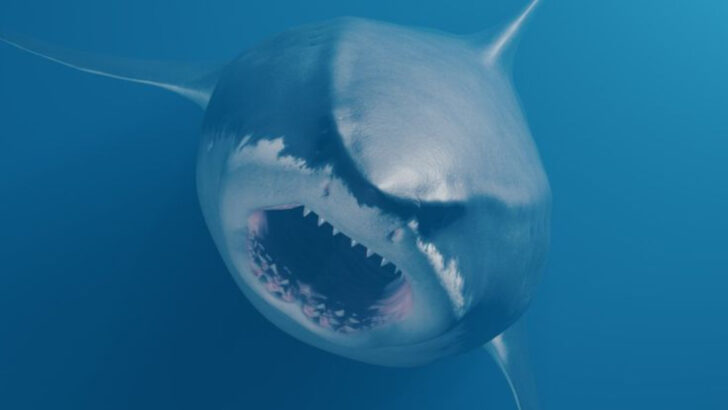Sharks have ruled the oceans for millions of years, and some of their ancient ancestors were absolute giants. These fearsome predators once lurked in the depths, their jaws capable of crushing anything in their path. But here’s the kicker: they’re no longer around.
From enormous creatures the size of buses to ones with jaw-dropping features, these extinct sharks were forces to be reckoned with. And while they no longer haunt the seas today, their stories remain etched in the history of the deep.
In this post, we’re diving into the lives of 22 incredible shark species that once dominated the ocean. These sharks were more than just creatures of myth—they were the true kings of the water. Ready to meet the legends? Let’s take a deep dive into the past and uncover these mysterious giants!
Megalodon
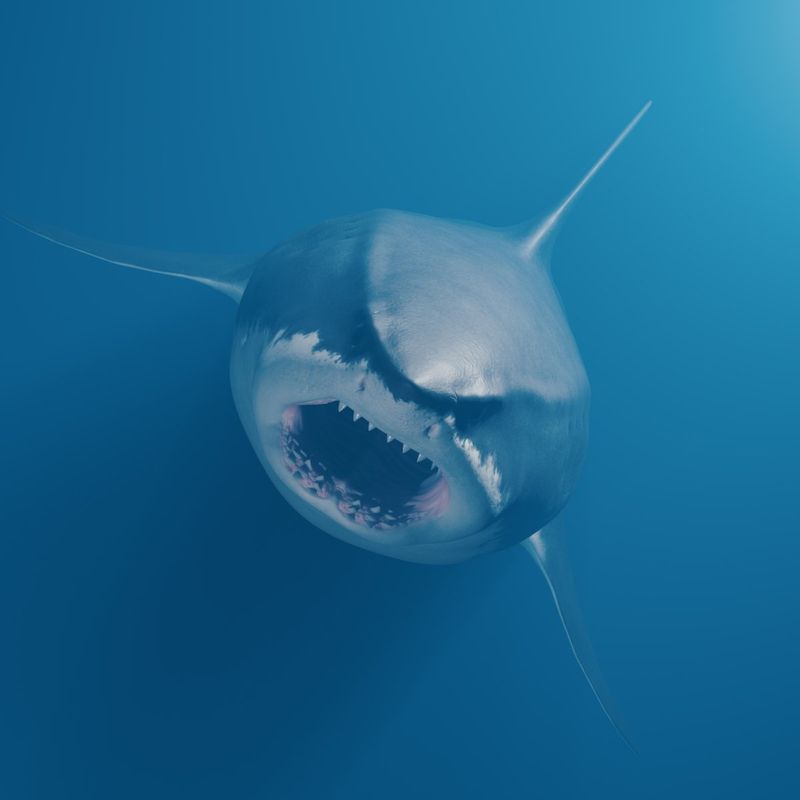
Megalodon, often called the king of the prehistoric seas, was the largest shark to ever exist. This gigantic predator reached lengths of up to 60 feet, dwarfing today’s great white sharks. Its teeth, some over seven inches long, were adapted for crushing bones of large marine mammals.
Despite its immense size, the Megalodon’s extinction was likely due to environmental changes and a decline in prey. Its legacy lives on in popular culture and scientific studies.
Megalodon remains a symbol of nature’s power and the mysteries of the deep, sparking fascination among enthusiasts and researchers alike.
Cretoxyrhina
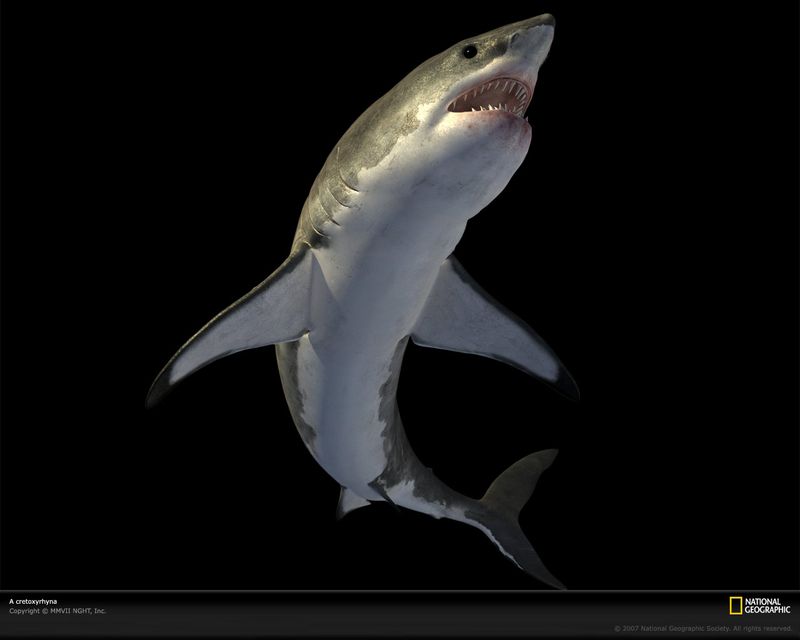
Cretoxyrhina, known as the “Ginsu Shark,” was a formidable predator during the late Cretaceous period. With a sleek body and sharp teeth, it efficiently hunted marine reptiles and other ocean inhabitants. Measuring over 20 feet, Cretoxyrhina was a dominant force, often compared to modern great whites.
Its fossilized remains have provided valuable insights into the evolution of sharks. The extinction of Cretoxyrhina marked a shift in oceanic ecosystems. Its disappearance paved the way for new species to evolve. Today, it serves as a fascinating subject for paleontologists studying prehistoric marine life.
Helicoprion
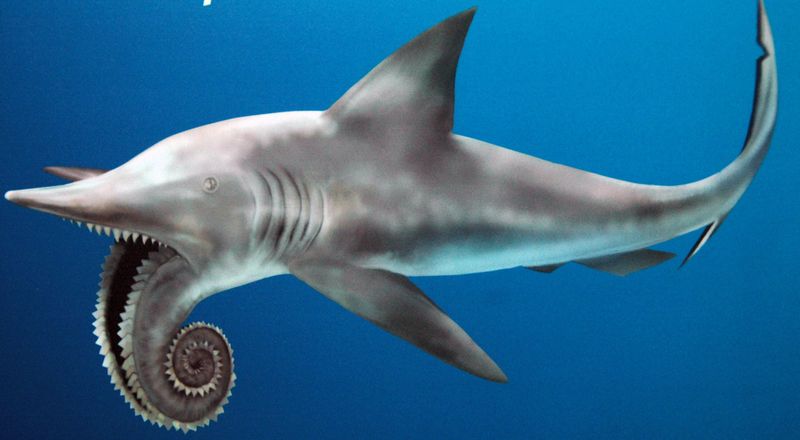
Helicoprion was a bizarre and fascinating shark known for its spiral-shaped lower jaw. This unique feature has puzzled scientists for years as it resembled a circular saw. Helicoprion lived during the early Permian period, approximately 290 million years ago. Its unusual jaw likely helped it capture soft-bodied prey, slicing through them with ease.
Although Helicoprion disappeared from the seas long ago, its remains continue to captivate researchers. The shark’s distinct anatomy provides a glimpse into the diverse adaptations of ancient marine predators, highlighting the complexity of evolutionary paths.
Stethacanthus
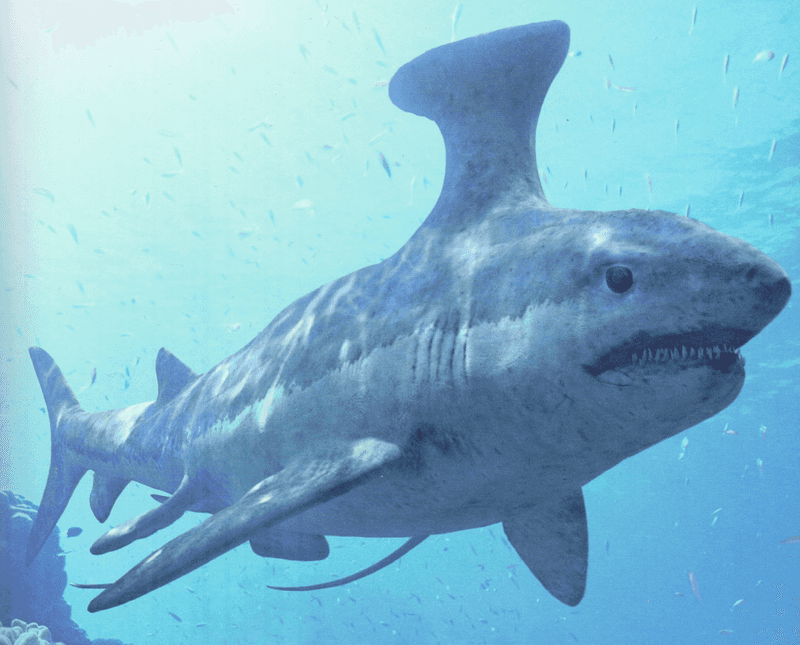
Stethacanthus was a small, peculiar shark with a distinct anvil-shaped dorsal fin. This unusual feature likely played a role in mating or defense mechanisms.
Living during the late Devonian and early Carboniferous periods, Stethacanthus measured just a few feet in length. Despite its size, it was an adept predator in its ecosystem.
The discovery of Stethacanthus fossils has intrigued scientists, offering insights into the diversity of early shark species. Its unique adaptations remind us of the myriad forms life can take in response to environmental pressures and evolutionary demands.
Xenacanthus
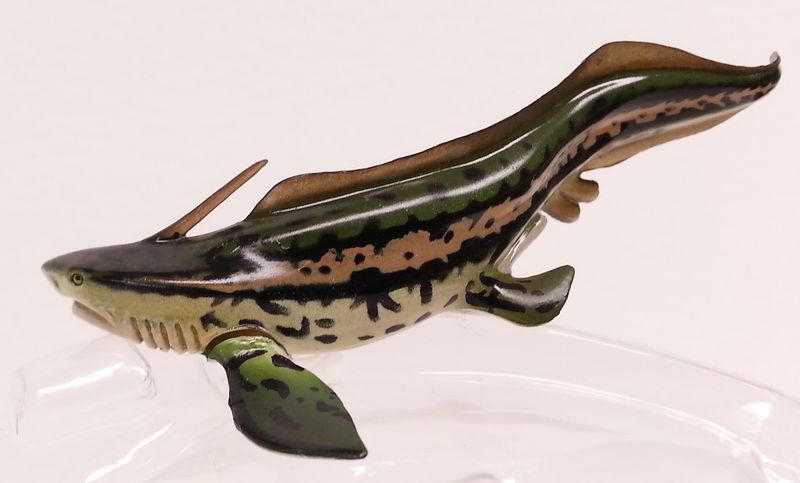
Xenacanthus was a freshwater shark that thrived in ancient rivers and lakes. Its eel-like body and distinctive head spine set it apart from other sharks. This prehistoric predator lived during the late Devonian to the Triassic period, adapting to various freshwater environments.
Despite its modest size, Xenacanthus was a successful hunter, preying on fish and amphibians. Fossils of Xenacanthus provide a unique look into the adaptations required for life in freshwater habitats.
Its extinction marked the end of a lineage that survived for millions of years, showcasing the impact of changing climates.
Cladoselache
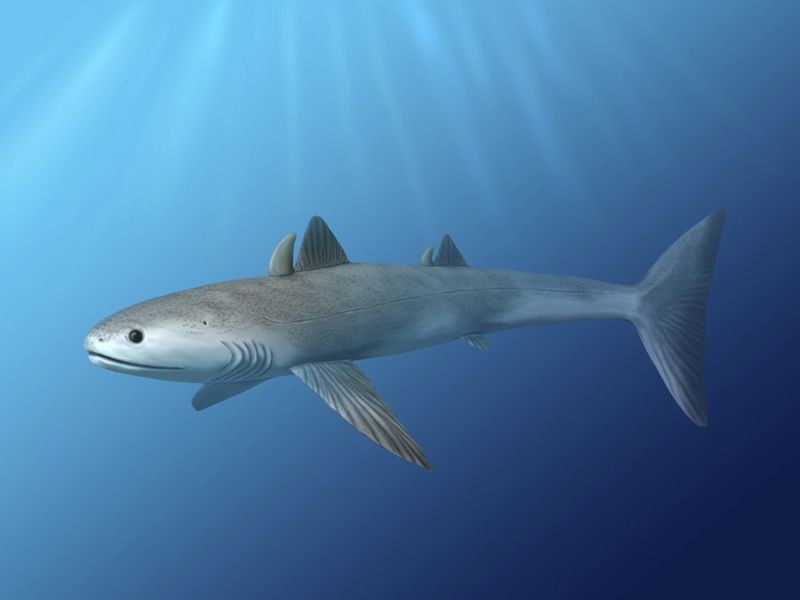
Cladoselache, one of the earliest known sharks, lived during the Devonian period, over 350 million years ago. It was a swift swimmer with a torpedo-shaped body, resembling modern sharks in many ways. Unlike most sharks, Cladoselache lacked scales, giving it a smooth appearance.
Its diet likely consisted of small fish and cephalopods, which it pursued with agility. Although Cladoselache didn’t survive past the Devonian, its fossils have provided essential information about early shark evolution.
This ancient predator’s streamlined form highlights the enduring efficiency of certain evolutionary traits in the animal kingdom.
Carcharocles chubutensis
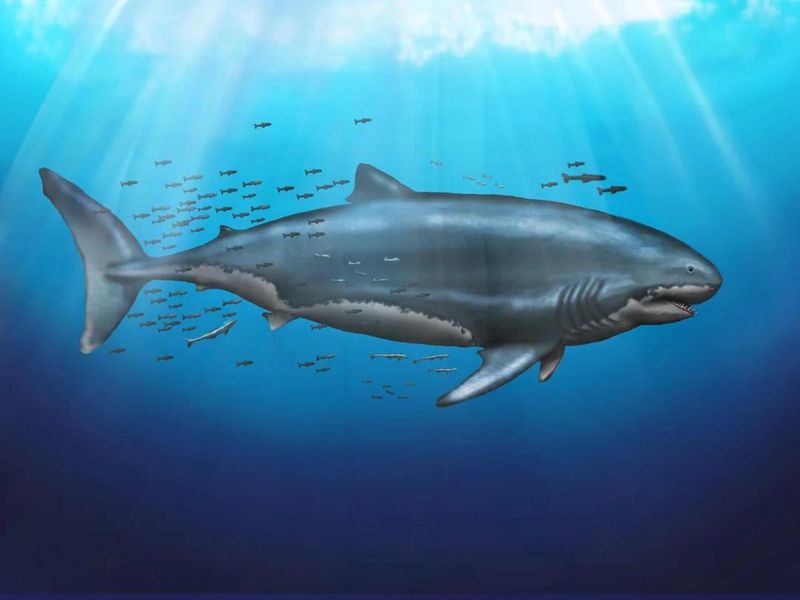
Carcharocles chubutensis was a giant shark closely related to the infamous Megalodon. It lived during the Oligocene to Miocene epochs, around 28 to 5 million years ago.
Reaching lengths of up to 40 feet, it was a dominant predator of its time, preying on whales and large fish. Its teeth, though slightly smaller than Megalodon’s, were equally formidable. The extinction of Carcharocles chubutensis likely resulted from oceanic changes that affected its food supply.
Today, its remains are studied to understand the progression of large predatory sharks in Earth’s history, offering clues about their adaptations.
Edestus
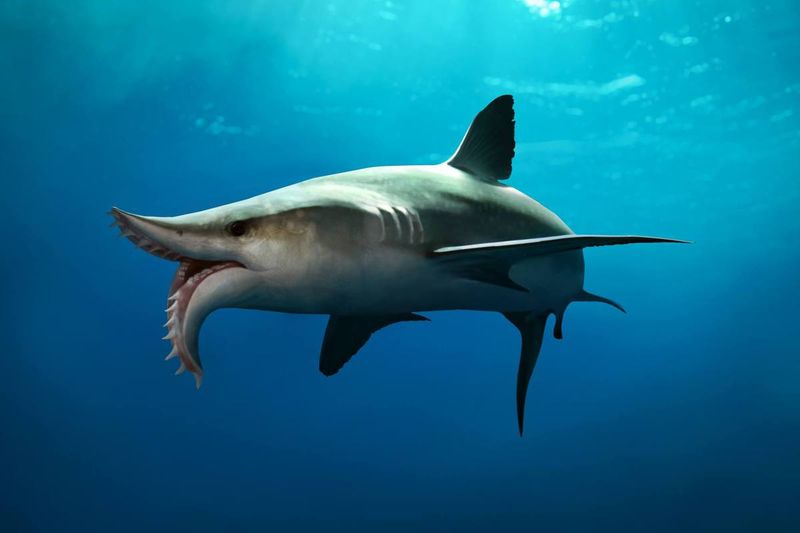
Edestus, known as the “Scissor-Tooth Shark,” had one of the most unique dental structures among prehistoric sharks. Its teeth were arranged in a bizarre, vertical fashion, resembling a pair of giant scissors.
This unusual adaptation likely helped Edestus slice through its prey, making it a formidable predator in its ecosystem. Its exact appearance remains debated due to limited fossil evidence. Edestus lived during the late Carboniferous period, over 300 million years ago.
Its extinction left a gap in our understanding of ancient marine life. However, it continues to intrigue scientists exploring evolutionary oddities.
Hybodus
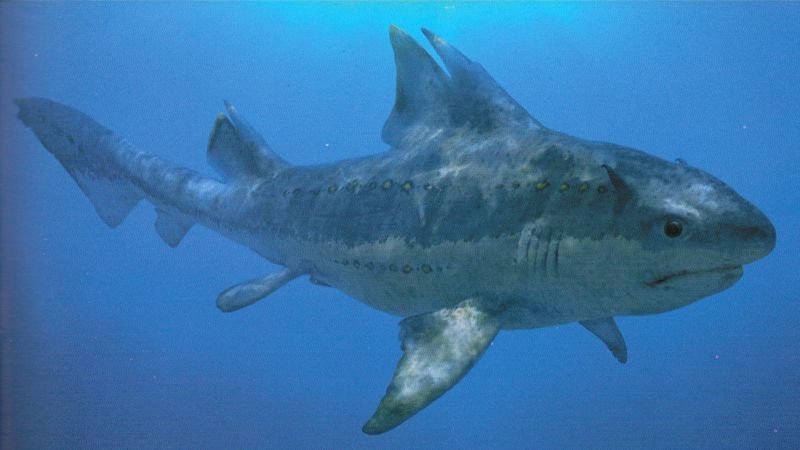
Hybodus was a genus of sharks that lived from the late Carboniferous to the end of the Cretaceous period. It had two dorsal fins, each equipped with a spine, and a unique tail structure.
This medium-sized shark was versatile, inhabiting both marine and freshwater environments. Its diet included fish and invertebrates, indicating its adaptability as a predator.
The extinction of Hybodus coincided with the mass extinction event that wiped out many marine species at the end of the Cretaceous. Its fossils offer valuable insights into the diversity and adaptability of ancient sharks across different habitats.
Scapanorhynchus
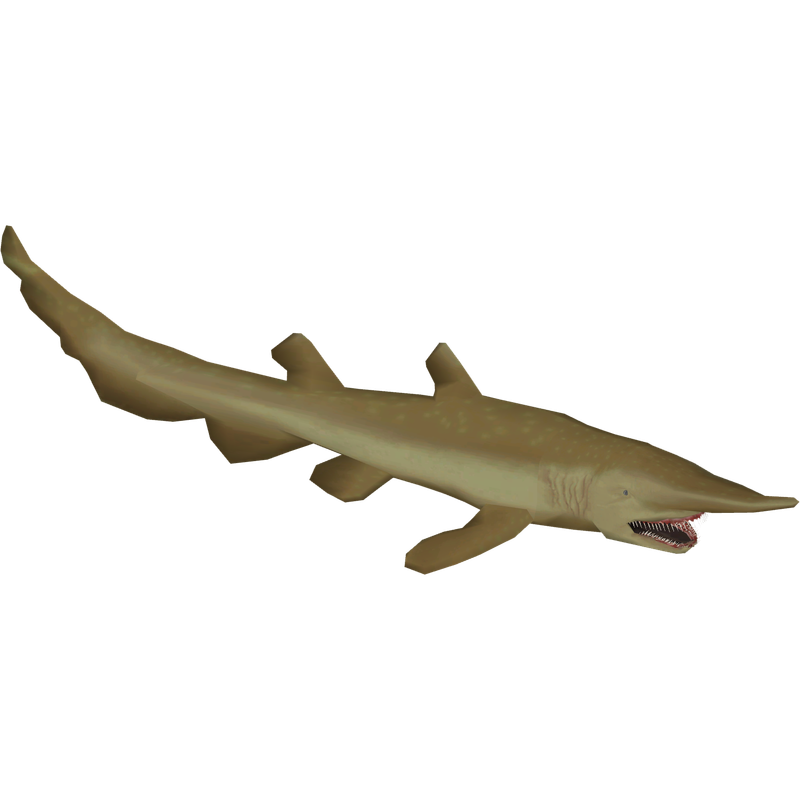
Scapanorhynchus, a distant ancestor of the modern goblin shark, lived during the late Cretaceous period. It featured an elongated snout, similar to its contemporary relative, aiding in detecting prey.
This predator thrived in the oceans, preying on fish and other small marine creatures. Its fossils have been found in various parts of the world, indicating a widespread distribution. Although Scapanorhynchus is long extinct, its lineage continues through its descendants.
The study of its remains sheds light on the evolutionary path of goblin sharks, illustrating the long-standing adaptability of this unique group.
Ptychodus
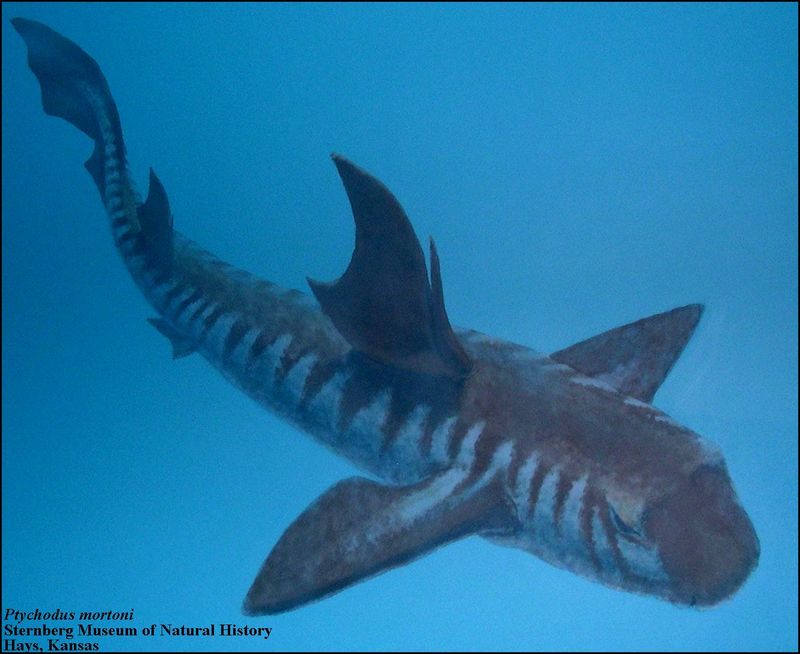
Ptychodus was a genus of durophagous sharks that thrived during the late Cretaceous period. Its large, flat teeth were perfectly adapted for crushing shellfish and other hard-bodied prey.
These sharks grew to impressive sizes, some reaching over 30 feet in length. Despite their formidable adaptations, Ptychodus eventually faced extinction, likely due to changes in available prey. Fossilized teeth of Ptychodus have been crucial for understanding the diet and ecological roles of durophagous predators.
Their existence highlights the importance of specialized adaptations in shaping ancient marine ecosystems and their eventual decline.
Squalicorax
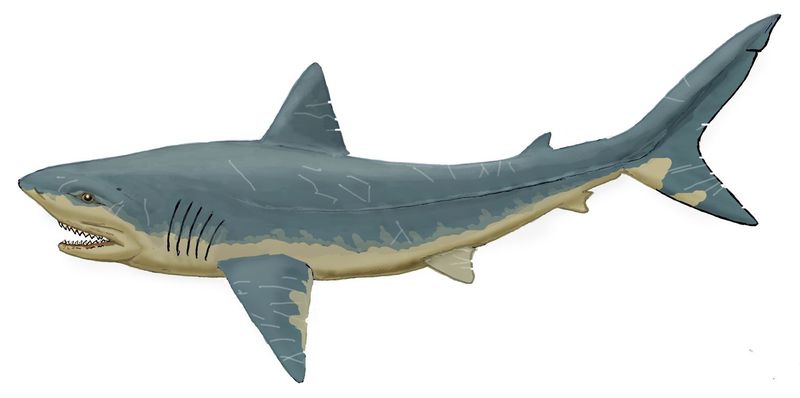
Squalicorax, commonly referred to as the “crow shark,” was a mid-sized predator of the late Cretaceous seas. It had a sleek body and sharp teeth, ideal for scavenging and hunting.
Fossils of Squalicorax have been discovered alongside dinosaur remains, suggesting it fed on carcasses as well as live prey. This opportunistic feeding behavior contributed to its success as a species. The extinction of Squalicorax coincided with the end-Cretaceous mass extinction event.
Its remains provide insights into the survival strategies of sharks, showcasing how adaptability can influence evolutionary outcomes across time periods.
Otodus obliquus
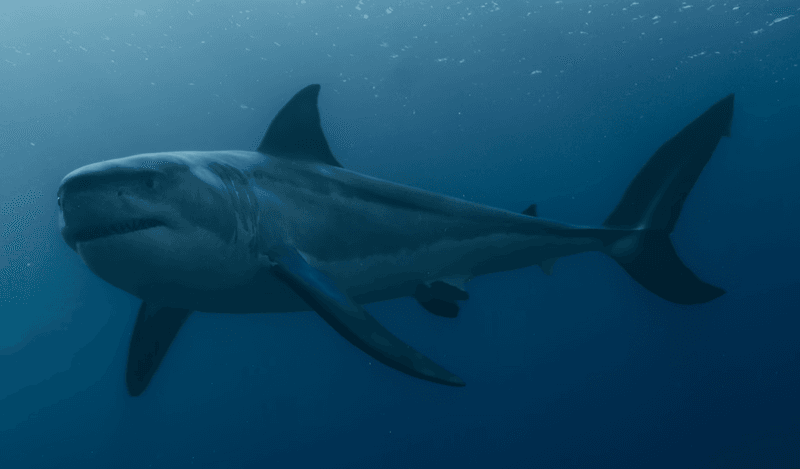
Otodus obliquus was an ancient shark species that lived during the early Paleogene period, about 60 million years ago. It was known for its large, serrated teeth, which were effective for ripping into large prey.
This predator was among the top of its food chain, feeding on various marine mammals and large fish. Its size and strength made it a dominant force in early ocean ecosystems.
Although Otodus obliquus is extinct, it is considered an ancestor to the modern great white shark. Studies of its fossils illuminate the evolutionary transitions leading to today’s top marine predators.
Pseudomegachasma
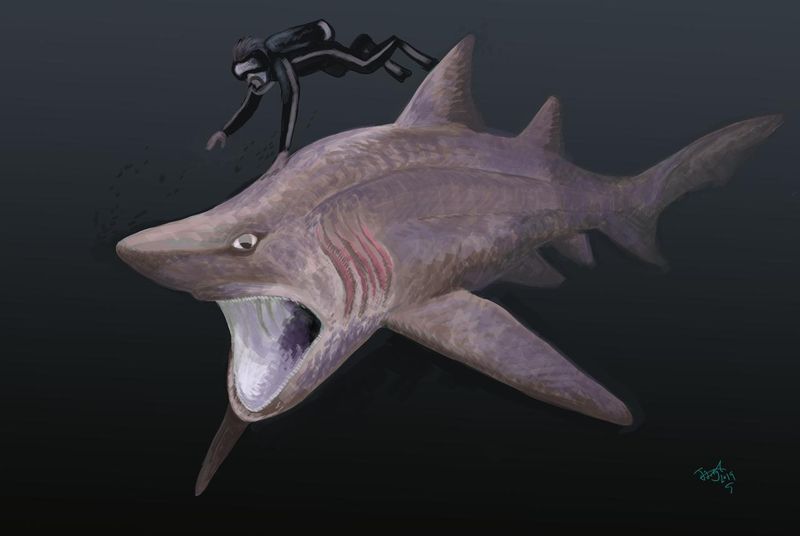
Pseudomegachasma was a prehistoric shark known for its large mouth and filter-feeding habits, similar to the modern-day basking shark. Its existence dates back to the Miocene epoch.
Unlike typical predatory sharks, Pseudomegachasma fed on plankton, using its wide mouth to filter vast amounts of water. This adaptation allowed it to thrive in nutrient-rich waters.
The extinction of Pseudomegachasma remains a mystery, but its fossils offer valuable insights into the diversity of feeding strategies among ancient sharks. Its unique lifestyle highlights the varied ecological niches sharks have occupied throughout history.
Parahelicoprion
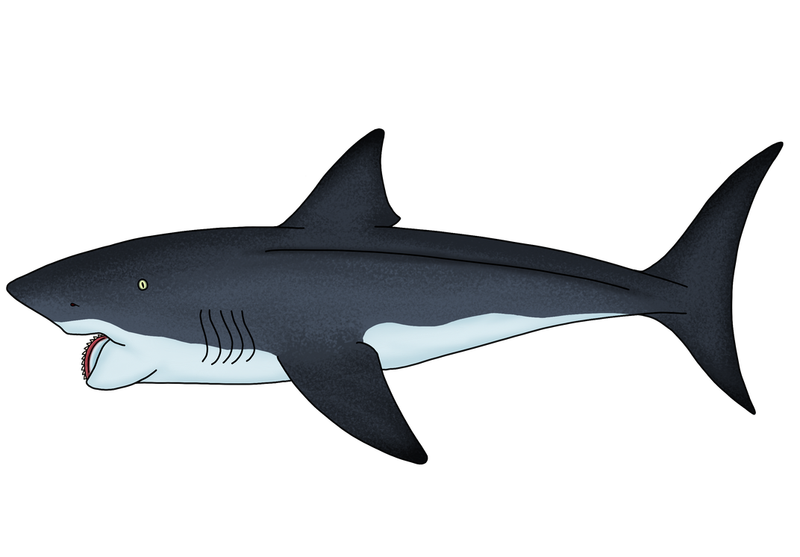
Parahelicoprion was a close relative of the more famous Helicoprion, sharing the distinctive spiral jaw feature. This ancient shark lived during the early Permian period. Its spiral jaw, resembling a buzzsaw blade, was likely used to capture soft-bodied prey. Parahelicoprion’s exact appearance is still a subject of scientific debate due to limited fossil evidence.
Despite these uncertainties, the shark’s remains provide a fascinating glimpse into the evolutionary experiments of nature. Parahelicoprion exemplifies the diversity of adaptations found in the ancient seas, contributing to our understanding of prehistoric marine life.
Anomotodon
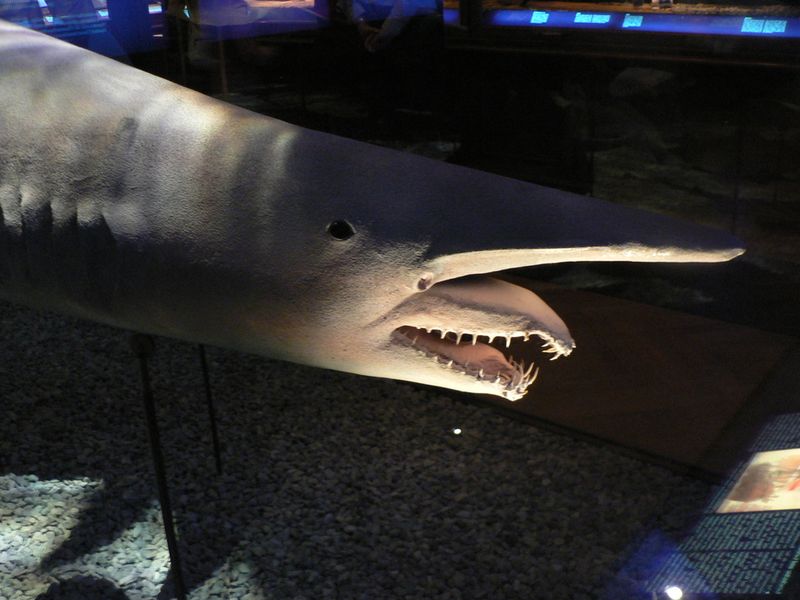
Anomotodon: The Sleek Predator
Anomotodon was a formidable predator of the ancient seas, known for its sleek body and sharp teeth. This shark inhabited oceans during the Cretaceous period, around 145 to 66 million years ago.
Its slender shape allowed it to move swiftly through the water, making it an adept hunter. The teeth of Anomotodon were designed for gripping slippery prey, showcasing its specialized feeding techniques.
Though not as famous as the Megalodon, Anomotodon played a significant role in its ecosystem, maintaining balance by preying on smaller marine creatures.
Glikmanius occidentalis
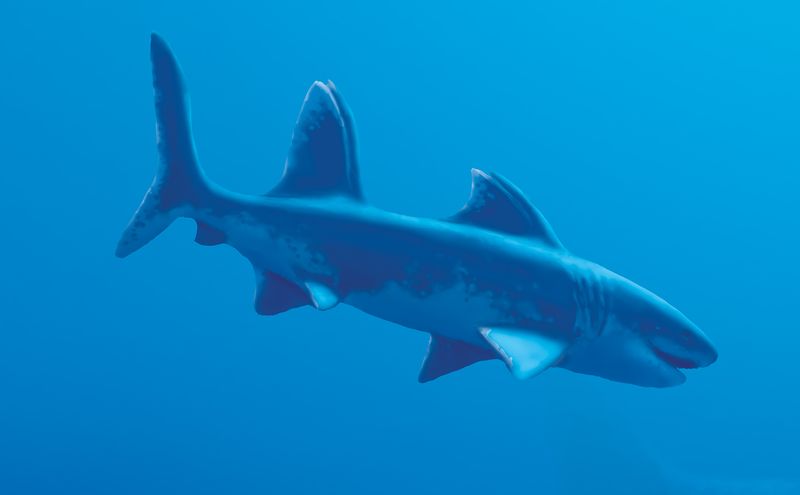
Glikmanius occidentalis: The Ancient Navigator
Glikmanius occidentalis was a prominent shark species during the Carboniferous period, approximately 359 to 299 million years ago. It featured a robust body and elongated fins, allowing it to navigate efficiently through ocean currents.
This shark’s anatomy suggests it was a strong swimmer, capable of covering large distances in search of food. Its presence indicates a diverse and complex marine ecosystem during its time.
Glikmanius occidentalis is an example of early shark evolution, providing insights into the adaptation and survival strategies of ancient marine predators.
Carcharocles auriculatus
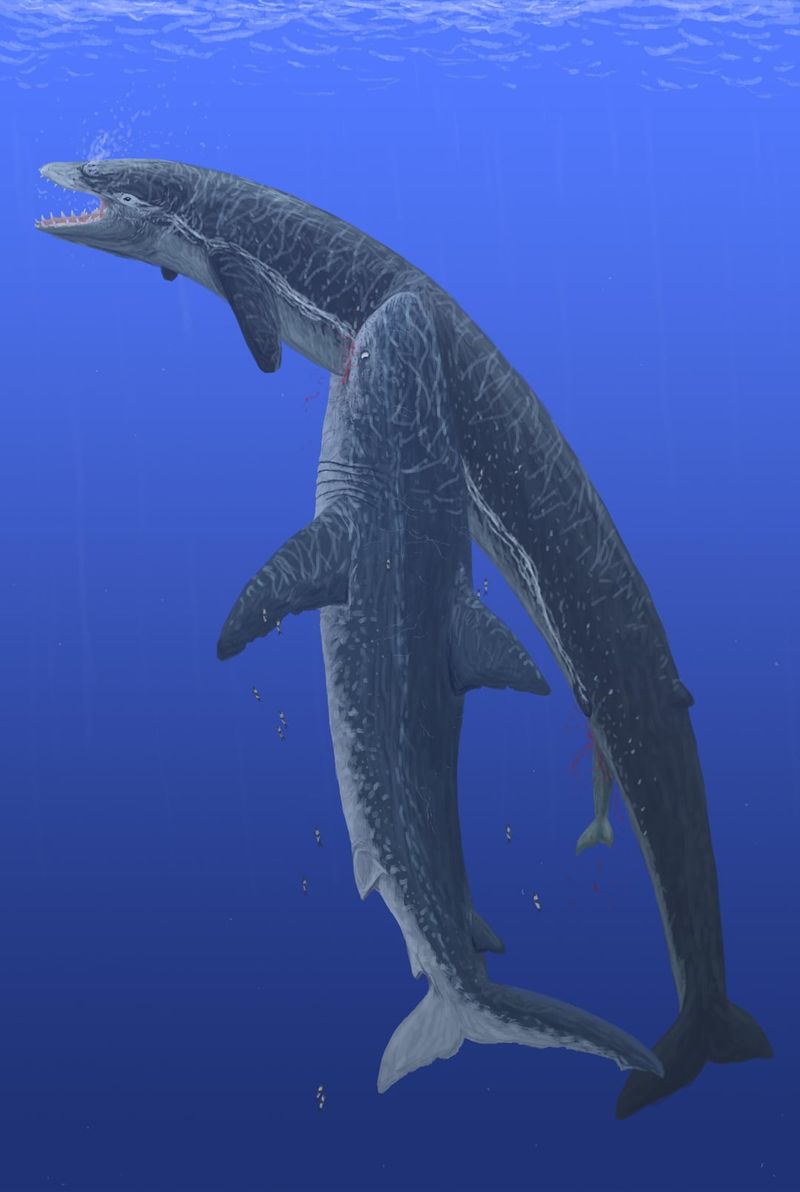
Carcharocles auriculatus was a formidable predator from the Eocene epoch. Known for its large, serrated teeth, it was closely related to the infamous Megalodon. This shark roamed the ancient seas, preying on marine mammals and large fish.
Its impressive size and powerful jaws made it a dominant force in the ocean. Fossil evidence suggests that Carcharocles auriculatus could reach lengths of up to 30 feet, making it one of the largest predators of its time.
Despite its fearsome reputation, much about this giant remains a mystery. The fossil record provides tantalizing glimpses into its life, but many details about its behavior and ecology remain unknown.
Galeocerdo capellini
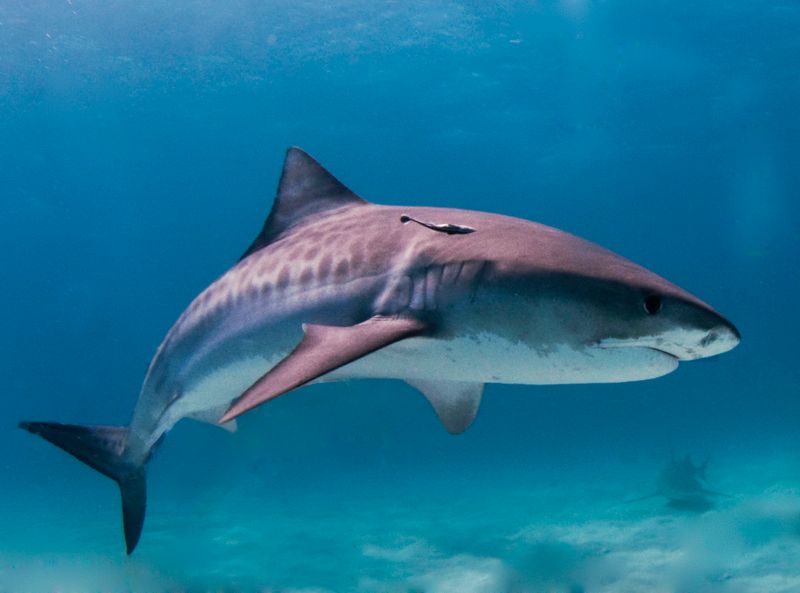
Galeocerdo capellini, an ancestor of modern tiger sharks, thrived during the Miocene era. This shark’s distinctive striped pattern helped it blend into its surroundings, making it an effective ambush predator.
Unlike its modern relatives, Galeocerdo capellini likely hunted a variety of prey, including fish, turtles, and possibly marine mammals. Its adaptability to different prey types made it a versatile hunter in ancient waters.
The fossilized remains of Galeocerdo capellini offer insights into the evolutionary history of tiger sharks. These fossils show a gradual transition in tooth structure, reflecting changes in diet and hunting strategies over millions of years.
Eugeneodontid
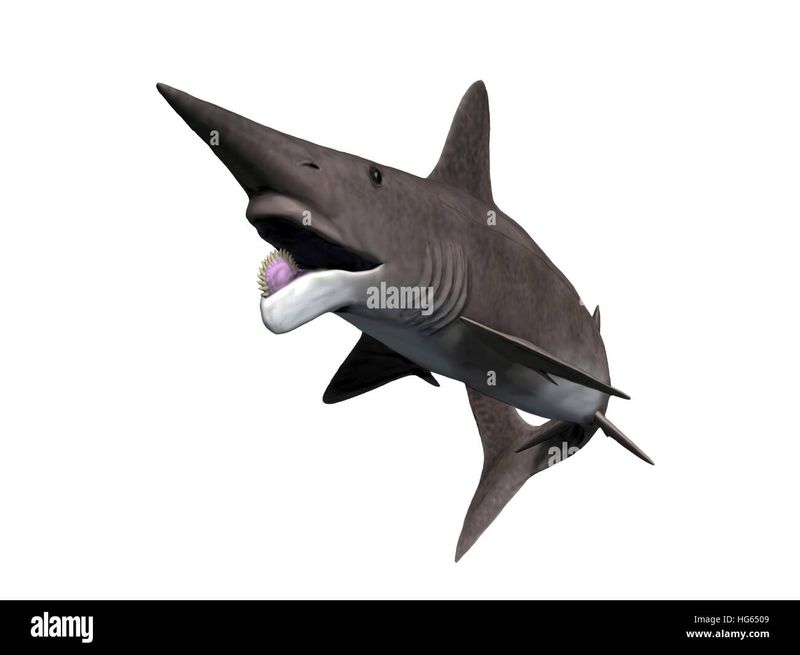
Eugeneodontids were a group of prehistoric sharks known for their peculiar whorl-tooth jaws. These unique dental structures have baffled scientists for years.
Living from the late Carboniferous to the early Triassic, Eugeneodontids occupied various marine habitats. Their whorl-teeth likely helped in processing prey, making them efficient predators.
The extinction of Eugeneodontids marked the end of one of nature’s strangest evolutionary experiments. Studying their fossils helps scientists understand the diverse adaptations of ancient sharks, illustrating the myriad forms life can take in response to ecological challenges.
Hemipristis serra
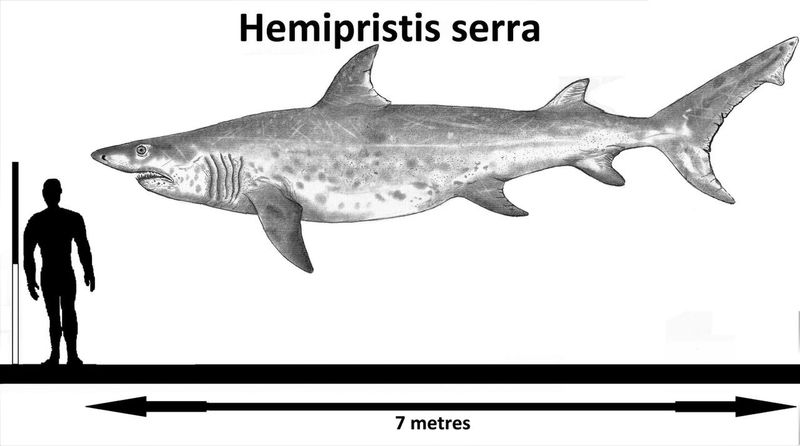
Hemipristis serra, often referred to as the snaggletooth shark, was a prominent predator during the Miocene epoch. Its uniquely shaped teeth, with one smooth edge and one serrated edge, were highly effective for capturing and consuming prey.
This shark inhabited warm, shallow waters where it hunted fish and other marine animals. Hemipristis serra’s efficient hunting strategy made it a key player in its aquatic environment.
The fossil record of Hemipristis serra provides valuable insights into its ecological role and evolution. These fossils help paint a picture of the marine life that flourished millions of years ago, showcasing the diversity of prehistoric shark species.
Synechodus dubrisiensis
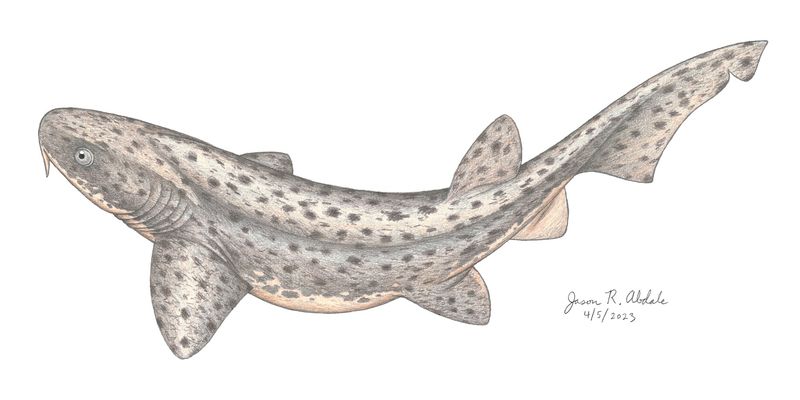
Synechodus dubrisiensis was a small but agile shark that lived during the Jurassic period. With its streamlined body and sharp, pointed teeth, it was perfectly adapted for hunting smaller marine creatures.
This shark’s agility and speed allowed it to swiftly navigate through the waters, making it a successful predator in its ecosystem. Its diet likely included fish and invertebrates, which it captured with precision.
Despite its size, Synechodus dubrisiensis played an important role in the marine food web. Its presence in the fossil record helps scientists understand the diversity and complexity of prehistoric marine ecosystems.

